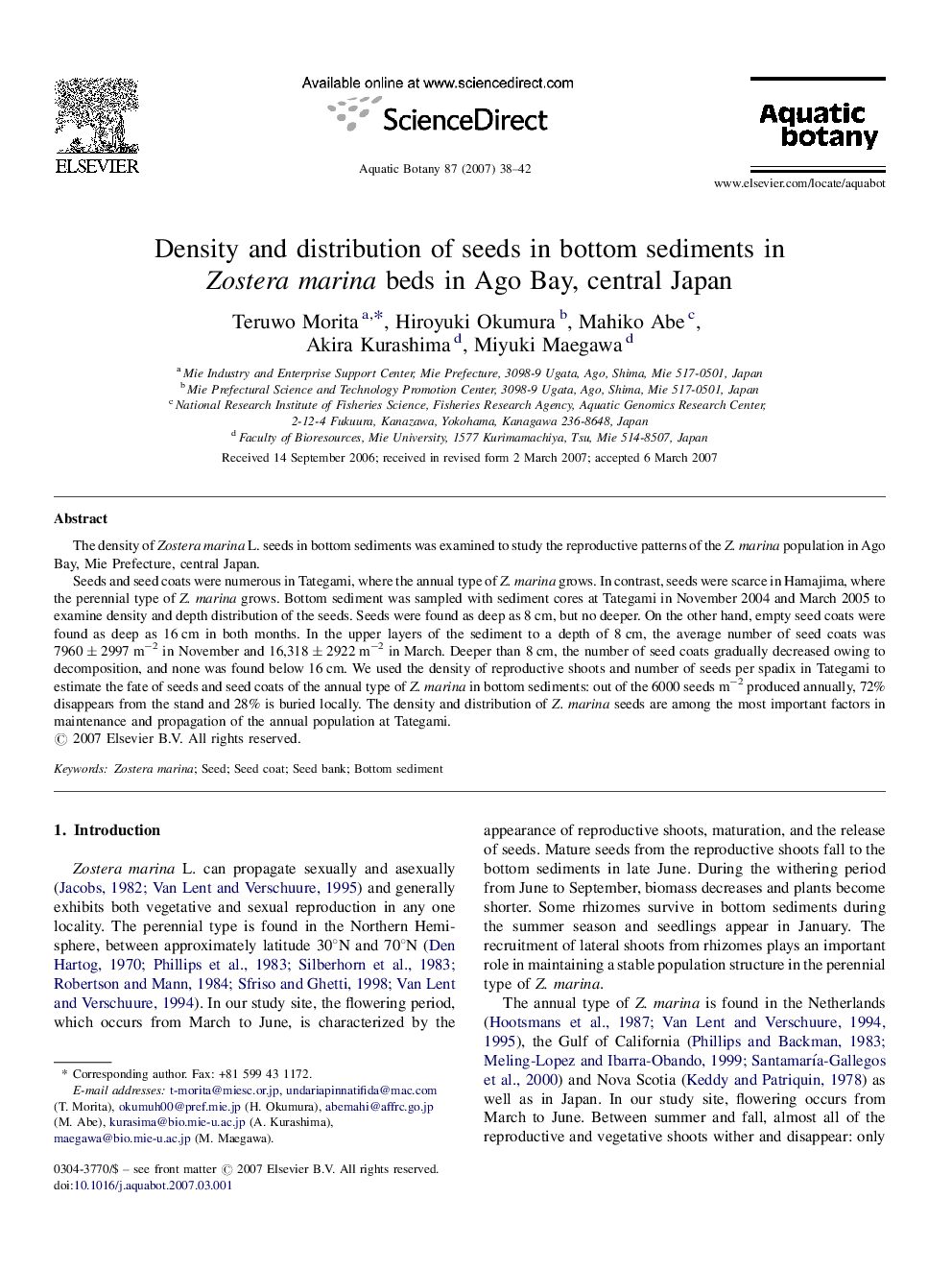| Article ID | Journal | Published Year | Pages | File Type |
|---|---|---|---|---|
| 4528769 | Aquatic Botany | 2007 | 5 Pages |
The density of Zostera marina L. seeds in bottom sediments was examined to study the reproductive patterns of the Z. marina population in Ago Bay, Mie Prefecture, central Japan.Seeds and seed coats were numerous in Tategami, where the annual type of Z. marina grows. In contrast, seeds were scarce in Hamajima, where the perennial type of Z. marina grows. Bottom sediment was sampled with sediment cores at Tategami in November 2004 and March 2005 to examine density and depth distribution of the seeds. Seeds were found as deep as 8 cm, but no deeper. On the other hand, empty seed coats were found as deep as 16 cm in both months. In the upper layers of the sediment to a depth of 8 cm, the average number of seed coats was 7960 ± 2997 m−2 in November and 16,318 ± 2922 m−2 in March. Deeper than 8 cm, the number of seed coats gradually decreased owing to decomposition, and none was found below 16 cm. We used the density of reproductive shoots and number of seeds per spadix in Tategami to estimate the fate of seeds and seed coats of the annual type of Z. marina in bottom sediments: out of the 6000 seeds m−2 produced annually, 72% disappears from the stand and 28% is buried locally. The density and distribution of Z. marina seeds are among the most important factors in maintenance and propagation of the annual population at Tategami.
